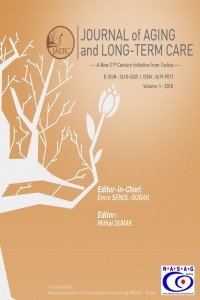
Journal of Aging and Long-Term Care
Yazarlar: Sara J. ENGLISH, Anw J. FLAHERTY
Konular:Beşeri Bilimler, Ortak Disiplinler
DOI:10.5505/jaltc.2019.37039
Anahtar Kelimeler:Admission process,APEs,Assumptions,Disadvantage,Expectations,Othering,Perceptions,Stigma,Long-term care
Özet: Assumptions, perceptions, and expectations (APEs) determine how individuals view the social world and the people who live within. This is especially true if persons do not share the same cultural experiences or beliefs of other individuals. Health care workers serve a variety of individuals from a multitude of cultural and ethnic backgrounds. Although workers are charged with developing individualized plans of care to address the multiple disadvantages and unique needs experienced by persons who admit for healthcare service, APEs held by the worker moderate the clustering of disadvantage experienced by clients within the social environment, further separating them from those who make determinations of, and decisions about, care. Although factors connected to vulnerability or disadvantage may affect the well-being and outcomes of clients, the process of othering, either implicit or explicit, creates and maintains a state of inequity, documented through assessments, care plans, and other formal artifacts of service. This paper uses a critical lens to review how APEs intersect with the existing processes and procedures of assessment, affirming and enhancing clusterings of disadvantage and social injustices experienced by clients, creating corrosive and reified states of chronic disadvantage that lead to poor and pervasive patterns of outcomes for vulnerable persons relegated to the category of the other and proposes a model of C.A.R.E. to improve outcomes during the assessment process. Key Practitioners Message Attitudes, perceptions, and expectations of human service professionals influence the process of assessment, which influences documents of care. The bias of human service workers can be explicit or implicit, malevolent or benevolent. Regardless of intent, all bias skews the accuracy of assessments for older persons admitting for services, including Long Term Care. Inaccurate assessments can influence plans of care for long periods of time, within and across systems. Personalizing the process of assessment improves the accuracy of assessment for older persons admitting for services. Incorporating clients into initial and on-going assessment by Connecting through Active engagement, Relationship building, and Empathetic response creates better, and more accurate, assessments.